Compare
Best price guarantee
Free tire replacement coverage
24/7 roadside assistance
Easy returns
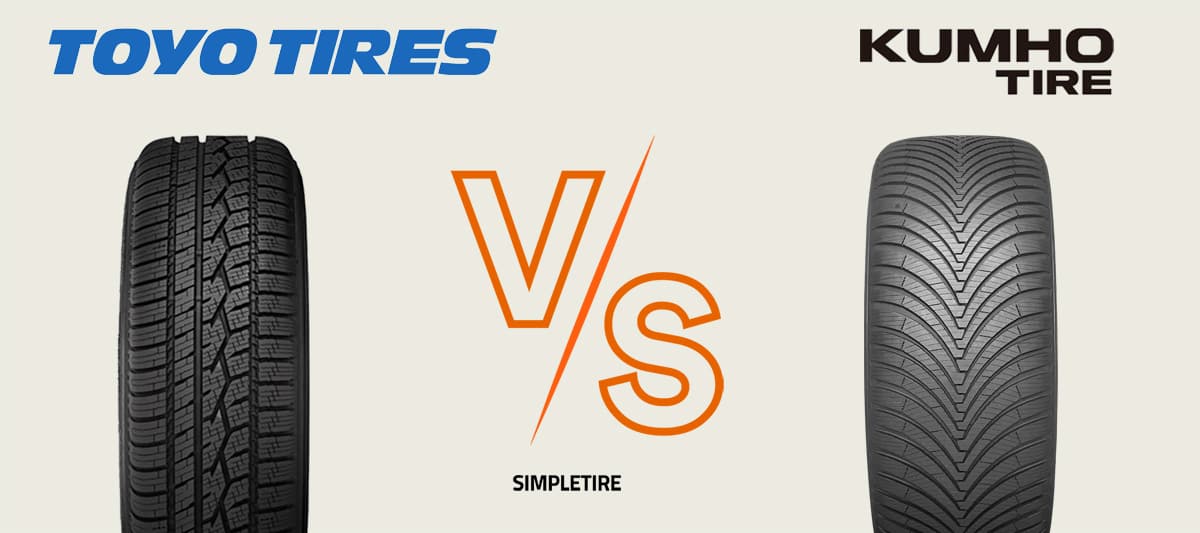
How exactly are all-weather tires designed to be different from regular tires? As a relatively new subset of tires, all-weather tires address situations where all-season tires don't provide enough grip or control. Almost everyone who has attempted to drive in three to four inches of snow knows that most all-season tires aren't going to be able to manage.
When it comes to winter traction, all-weather tires are meant to give you an advantage because regular tires usually can't provide you with the kind of reliable grip, control, and braking you need. To provide better and more constant grip in snow and slush, all-weather tires are engineered with features such as aggressive tread patterns, optimized sipe networks, and specific formulas for the tread. Put simply, their tires offer improved traction in the winter without the hassle of removing and storing winter tires when temperatures rise beyond 40 to 45 degrees Fahrenheit.
The aim of this article is to compare Toyo Celsius vs Kumho Solus HA3 in terms of traction, handling, and longevity to decipher which is the better purchase as per your needs.
Toyo Celsius tires
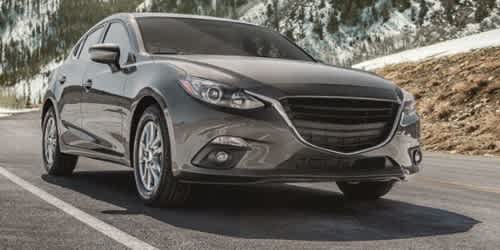
With a healthy tread life warranty and the ability to perform in a range of circumstances, the Toyo Celsius is a trustworthy tire that drivers can trust for today's passenger and luxury cars. It was created with drivers in mind who normally need a tire that can be worn all year round and still perform well in snow. Compared to a regular all-weather tire, the Celsius' stopping distances on snow and ice are 14 feet and 8 feet shorter than competitors. Whether the road is dry, wet, icy, or covered in snow, its tread pattern will help you grip the surface easily. When the snow is deep, specially designed Snow Claws will assist you in traction, and the tread's grooves will keep slush and snow off the tire, further enhancing traction. As per our tests, the Celsius was found suitable for an average SimpleScore of 8.2.
Kumho Solus HA32 tires
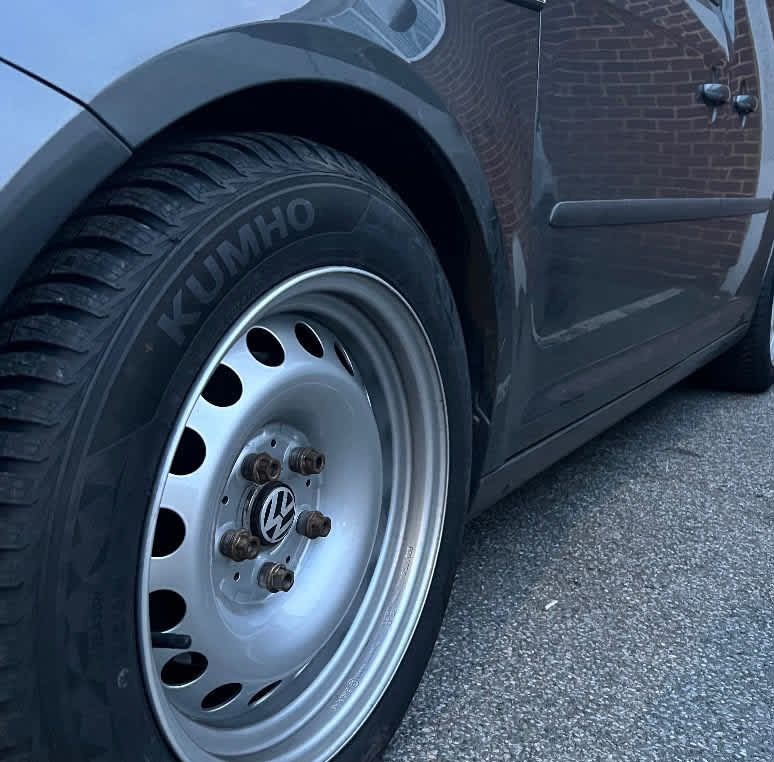
An all-weather tire that's ahead of its time with a bunch of new features and innovations is the Kumho Solus HA32. With its distinctive V-shaped directional tread and angled grooves, the Solus HA32 is tailor-made for better performance in wet weather by redirecting water and slush away from the contact patch. Consistent traction in the winter, reduced stopping distances, longer wear life, and less environmental impact are all benefits of the newly created tread compound that incorporates pine resin. The tread's center blocks are connected by 3D slope tie-bars, which improve straight-line road manners, rigidity, and cornering ability. To provide the driver a head start when treadwear starts, the treads have hourglass visible wear indications molded into them.
A great traction SimpleScore is due to Three Peak Mountain Snowflake certification for winter performance and 3D sipes that increase traction in both dry and wet conditions. The Solus HA32 receives a healthy manufacturer's tread life warranty from Kumho. If you're shopping for a trustworthy set of all-weather tires, the Kumho Solus HA32 is a great pick with an overall SimpleScore of 8.7.
Toyo Celsius vs Kumho Solus HA32 tires on traction
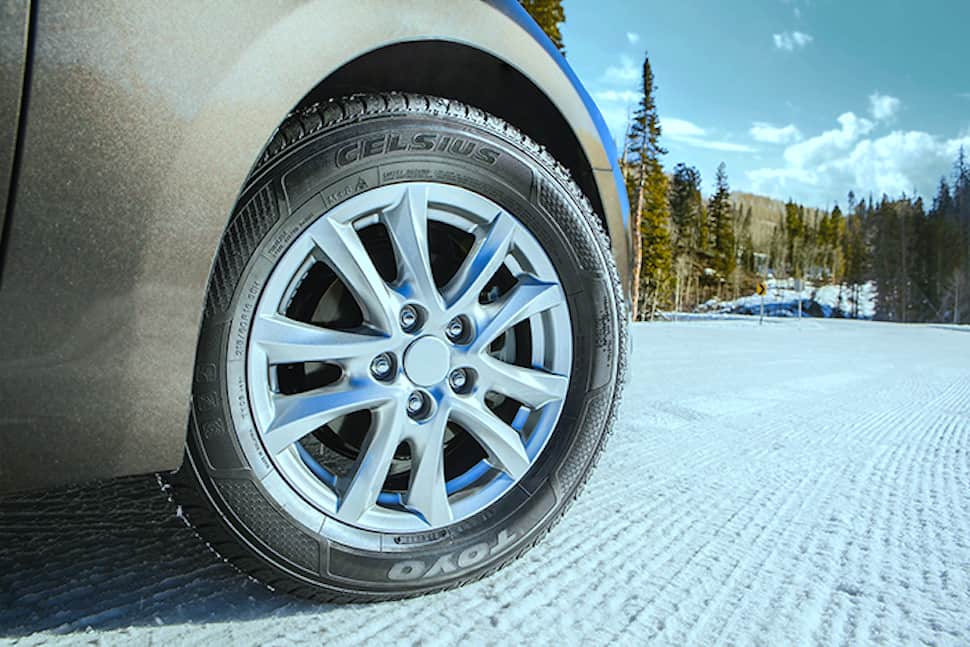
As per our SimpleScore systems, the Toyo was found eligible for an 8.6 and the Kumho for an 8.5, signifying a minor difference. Both of them feature the Three Peak Mountain Snowflake certification for severe winter service, and both have different design features that give them advantages in wet or wintry conditions. You’ll find multi-wave sipes for better grip on the Toyo Celsius, along with slush grooves, snow claws, and an asymmetric tread pattern. On the other hand, the presence of 3D sipes, a pine resin-infused tread compound, and a directional tread pattern are vital for grip on the Kumho Solus HA32.
ADVANTAGE: Toyo Celsius
Toyo Celsius vs Kumho Solus HA32 tires on handling
We have provided SimpleScores of 8.5 for the Toyo and 8.8 for the Kumho in the handling category, showing that it is definitely another squeaker. It isn’t fair to expect tires under the SimpleScore of 9 to have the cornering ability, steering response, and overall handling dynamics of an Ultra-high-performance (UHP) tire.
Both tires were found to be very capable and nimble with respect to handling. Multi-wave sipes on the Toyo Celsius are useful for better braking on wet, icy, and dry roads. Additionally, the asymmetric tread design is most useful for greater cornering, acceleration, and stability. The Kumho Solus HA32 has been optimized for stability and performance, with performance indicators helping check when the performance becomes low.
Though the scores are very close, we have taken customer reviews into account for the final decision.
ADVANTAGE: Kumho Solus HA32
Toyo Celsius vs Kumho Solus HA32 tires on longevity
Considering the Toyo Celsius's longevity SimpleScore of 8.7 and the Kumho Solus HA32's 8.9, the difference becomes somewhat more apparent when considering lifespan and service life. There's no difference in terms of warranty as both tires receive 60,000 mile limited manufacturer's tread life warranties. Significantly, it does little to explain the wide disparity in SimpleScore ratings. Multi-wave sipes on the Toyo and the Kumho are useful in reducing irregular wear. The Toyo's asymmetric design makes it suitable for cross-rotation, thereby decreasing irregular wear. On the other hand, performance wear indicators help keep wear in check.
ADVANTAGE: Kumho Solus HA32
When to use each
Both, the Toyo Celsius and and Kumho Solus HA32 are great all-weather tires if you're looking for reliable year-round traction. In addition to providing confident performance year-round and being backed by significant manufacturer's tread life coverage, both the tires feature the Three Peak Mountain Snowflake certification for severe winter performance and traction. All-weather tires are a fantastic, adaptable option for dealing with difficult winter weather if you do not drive through very heavy snow or do not intend to store or change tires during the year.
Similar to the traction of a supple rubber boot as opposed to a hard-rubber hockey puck, the tread compound of winter tires is designed to remain flexible to provide grip even when temperatures drop below freezing. Although they have unparalleled traction in the winter, the negative is that the tread compound is softer and will wear out rapidly on hot days. To avoid the seasonal hassle of dismounting and storing your winter tires for the next nine months until winter rolls around and the snow starts piling up again, tire manufacturers recommend switching to all-season tires when temperatures reach 40–45 degrees. This is where buying an all-weather becomes a great option.
Which one should you choose?
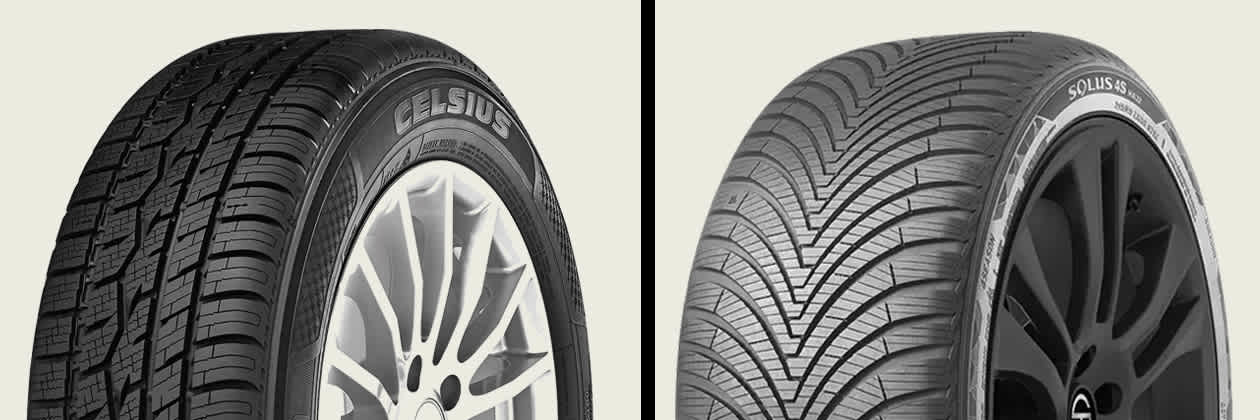
At SimpleTire, we strive to come up with obvious benefits in these comparison reviews that help one tire score over its competitor. The entire comparison aims to help you decide "which tire should you choose". However, we must say that the above process has been tough to follow with the Toyo Celsius and the Kumho Solus HA32, considering how evenly both are matched. Both tires include next-gen design elements and innovations and are practically indistinguishable in SimpleScore rankings. Additionally, they come with robust limited manufacturer's tread life coverage.
Still not sure which tire to buy? Fortunately, SimpleTire is here to help as our helpful agents are more than happy to assist you in selecting the right tire for your ride and budget.
Ready to find the perfect tires?
Search By